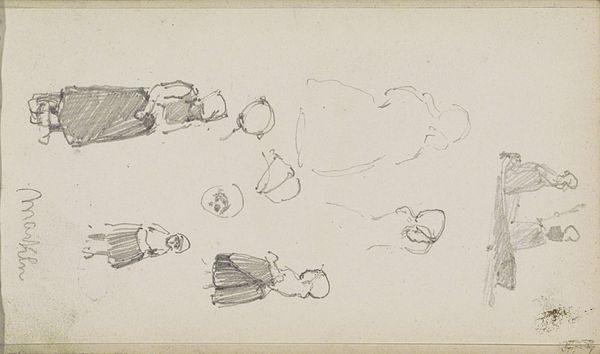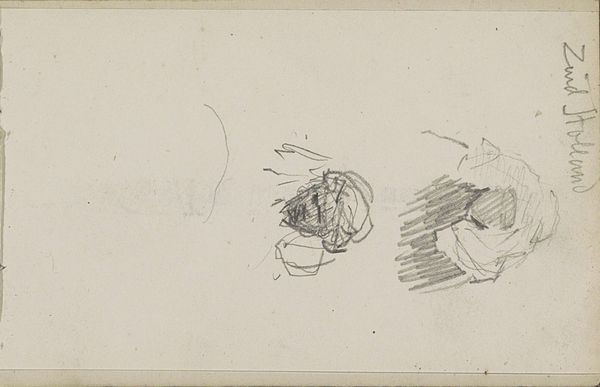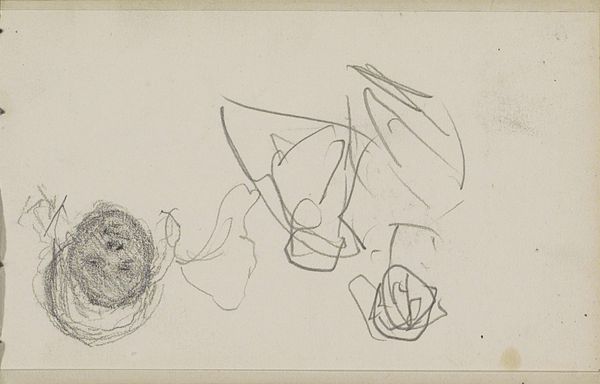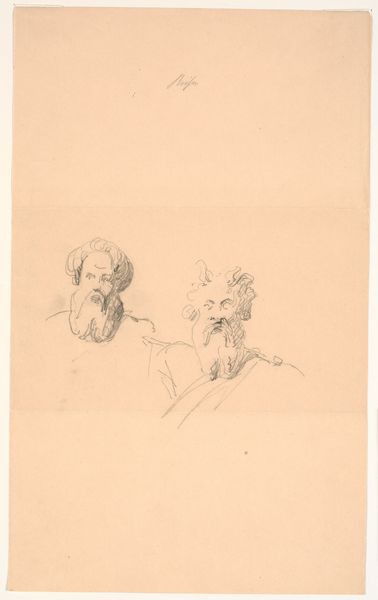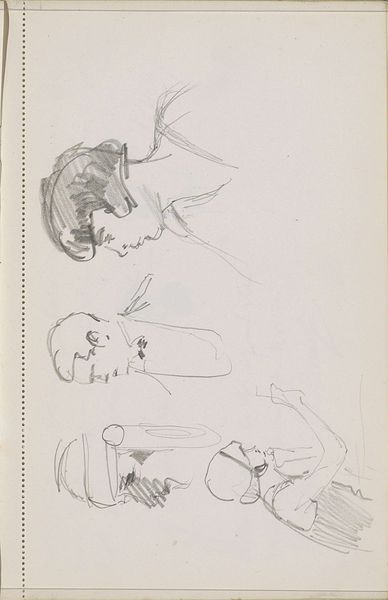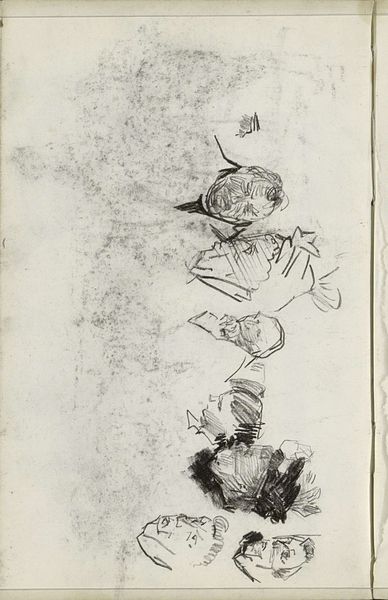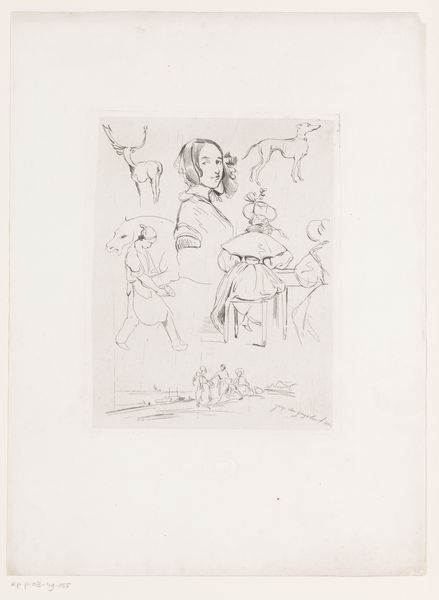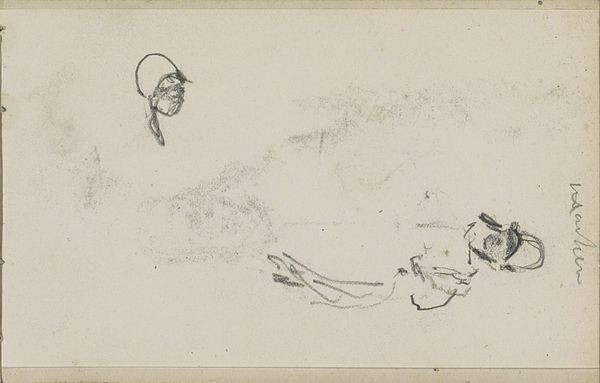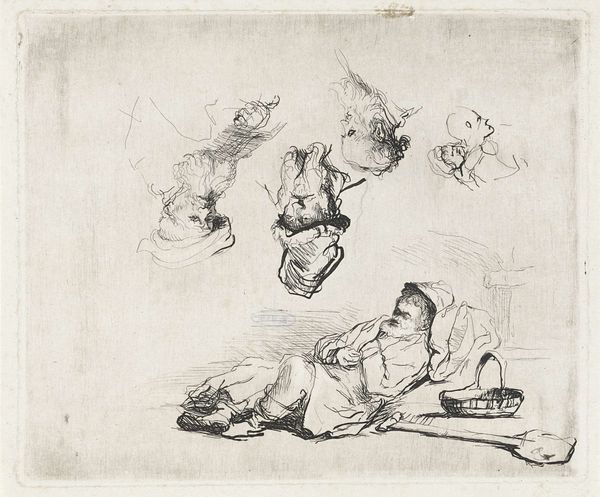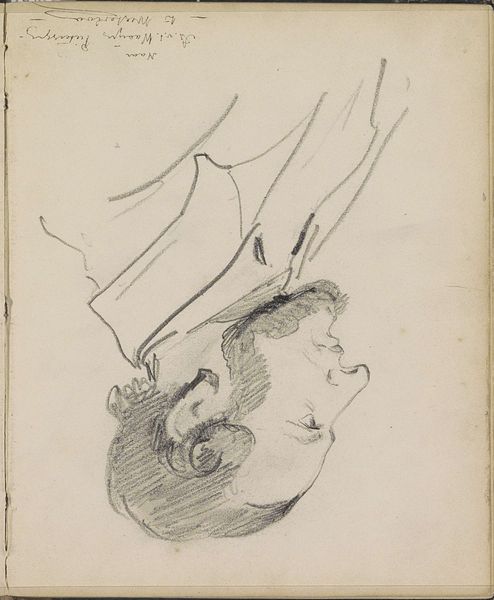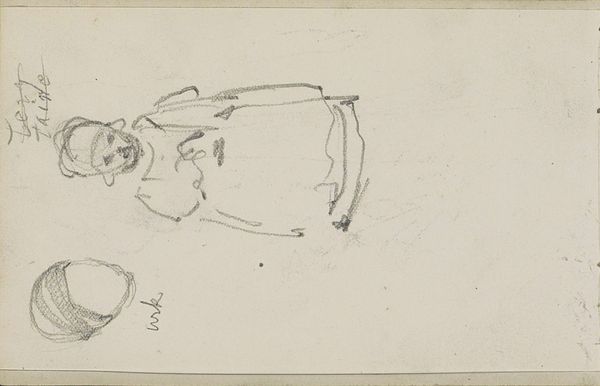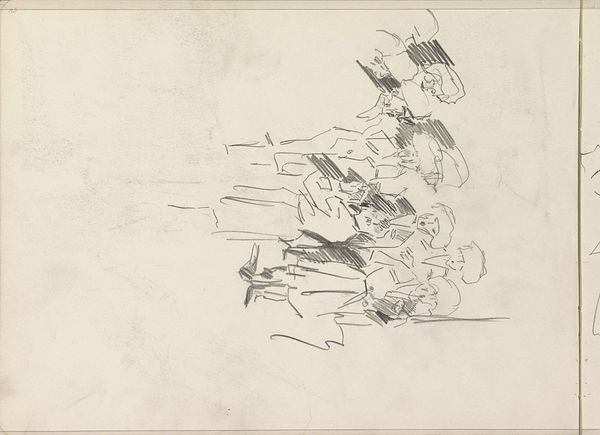
drawing, print, etching, paper, engraving
#
portrait
#
drawing
#
neoclassicism
# print
#
etching
#
paper
#
genre-painting
#
engraving
Dimensions: height 158 mm, width 137 mm
Copyright: Rijks Museum: Open Domain
Editor: Here we have Louis Bernard Coclers' "Studieblad met zes hoofden," or "Study Sheet with Six Heads," made sometime between 1756 and 1817. It looks like an etching or engraving on paper. I’m immediately struck by how this seemingly simple sketch gives you such a sense of 18th-century genre. What can you tell us about the culture behind it? Curator: This "study sheet" provides us with a fascinating insight into artistic practices of the late 18th and early 19th centuries, deeply shaped by social and institutional shifts. Artists like Coclers often created these sheets as both learning tools and commercial products. They speak to the rise of art academies and the increased demand for reproducible imagery. The detailed rendering, almost photographic, points towards an emerging democratization of portraiture. Notice how these are not the faces of the elite; they belong to the everyday person. What do you think this reflects about the evolving relationship between art and its public? Editor: So it's less about immortalizing nobility and more about observing the common person? How would prints like these be consumed or used? Curator: Precisely. Think of it within the context of the Enlightenment – a period increasingly focused on reason and observation. These sheets likely circulated among aspiring artists, perhaps even the middle class interested in honing their drawing skills. Didactic prints such as these contributed to standardizing artistic training. The fact it's a print underscores its accessibility; these images weren’t meant to be locked away. The visual style embodies neoclassicism, favoring simplicity, clarity, and, again, everyday life over dramatic historical painting. Editor: That makes so much sense! Seeing this as a proto-photographic attempt to capture 'types' helps me connect it to social shifts of the period. It really is amazing how even a study sheet holds so much history within it! Curator: Exactly. And it reminds us that even seemingly minor works can reveal significant aspects of the art world and its relationship to the society that produced it.
Comments
No comments
Be the first to comment and join the conversation on the ultimate creative platform.
